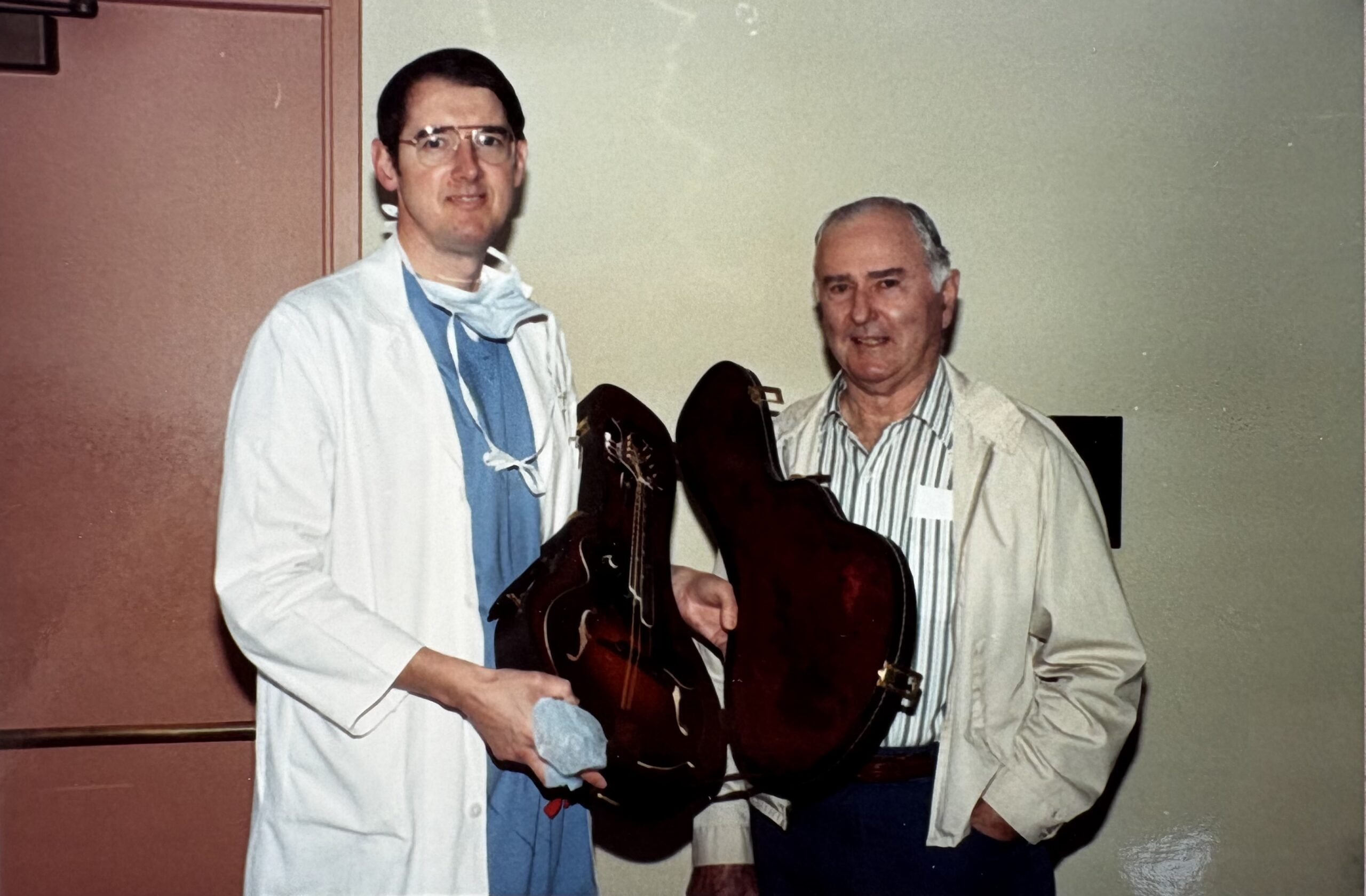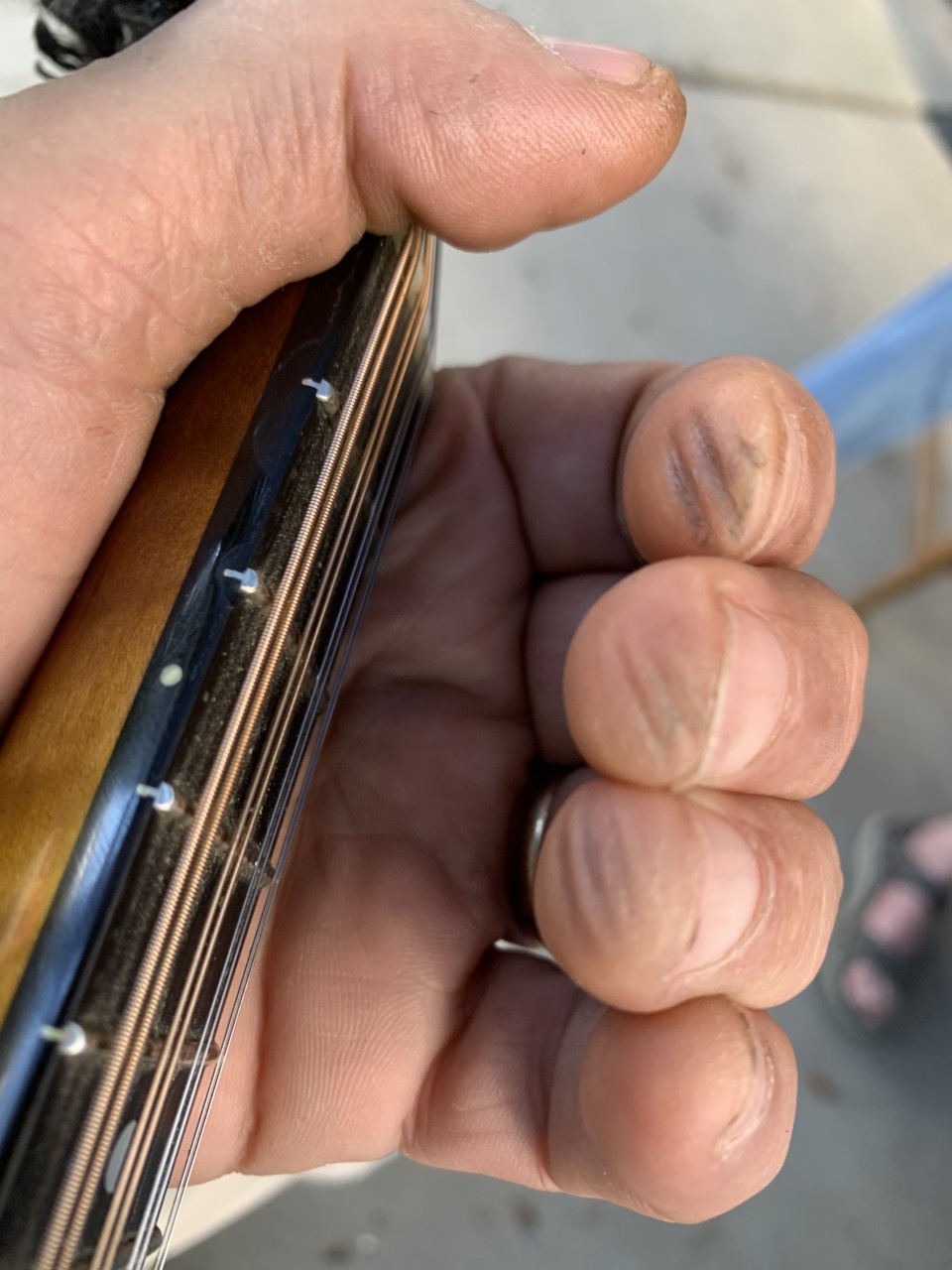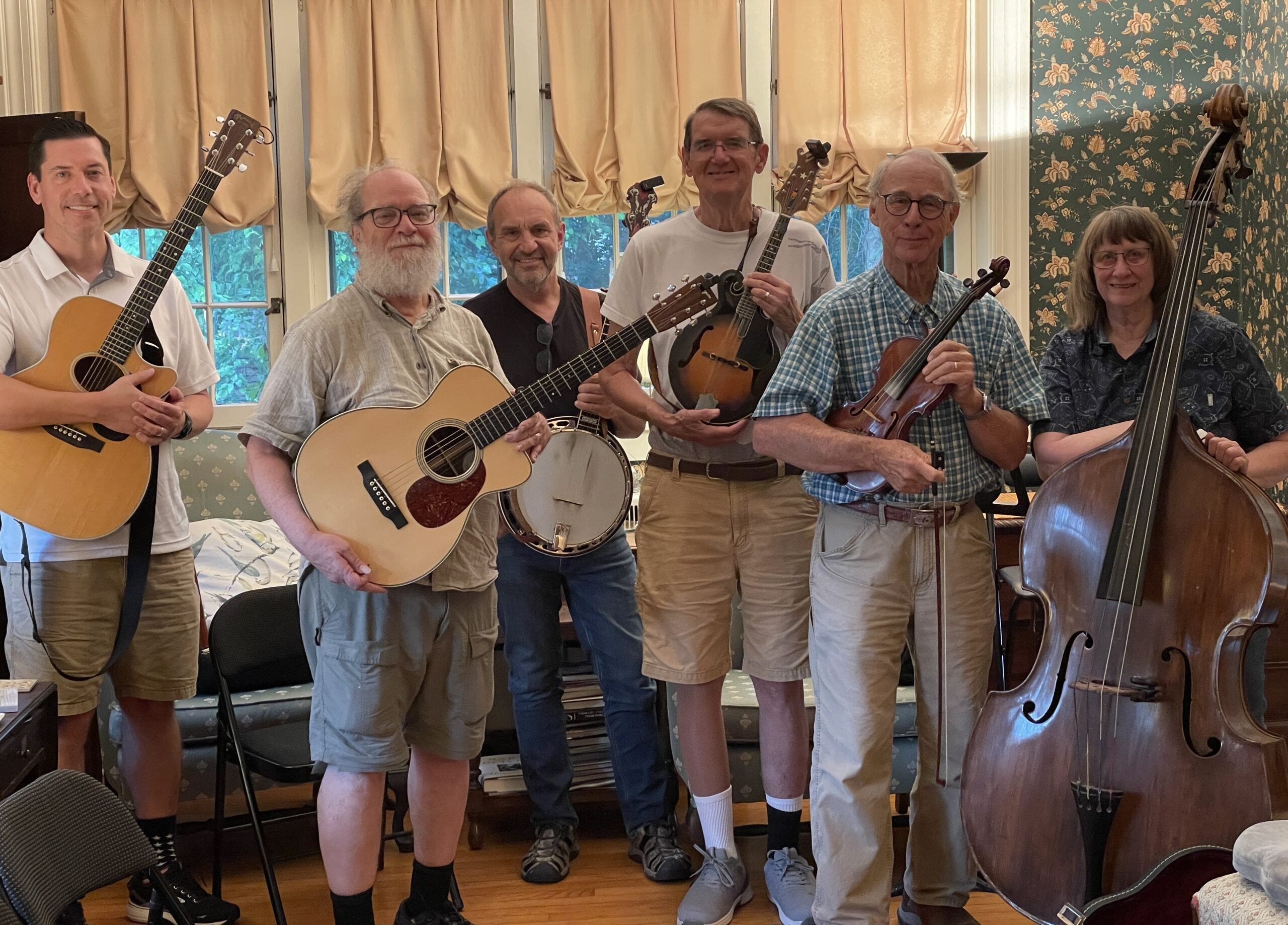The BRC craftsman grew up in the Northeast folk music scene. In 1960, he built his first banjo, a long neck 5-stringer, from parts left-over at a fire sale. He later procured a decaying pot-belly or “tater bug” mandolin and performed with it occasionally in a folk music duo. The ancient mandolin eventually crumbled in disrepair.
Years later, the BRC musician relocated to the Southland for medical training where he was also immersed in the surrounding Bluegrass music culture. His professional journey eventually settled him and his young family in Mid-America where he discovered a vibrant music scene. His interest in the mandolin revived, so he purchased one in the early 1990`s from a local craftsman/musician who he befriended in a weekly jam session that convened in the basement of a hardware store. The payment check dated Feb. 5, 1992 still resides in his instrument case as a keepsake.

The luthier personally delivered the hand-crafted mandolin to its busy new owner. With its marvelous tone, the splendidly constructed instrument became the musician`s go-to option when a jam session needed a crisp “chop” to focus the off-beat accented rhythm of Bluegrass music.
Mandolin strings are duplicated and strung in like-pairs. As evidenced below, a musician`s fingertips experience double duty compared to when picking the single light-guage strings of a banjo.

When jamming with a younger and flourishing banjoist, the BRC craftsman regularly turns to the mandolin to give a burgeoning 5-string musician room to polish-up some chops.

Above far right, our bassist routinely wears a glove on her right hand to protect her fingertips while manipulating hefty bass strings. She is also a skilled hammer dulcimer player which requires no protective wear. Far left is the BRC craftsman`s Texas son who joins our Thursday evening jam sessions when visiting from the Lone Star State. He also plays electric bass for us when needed.
From the BRC: Happy picking y`all, whatever instrument you play.

No Comments